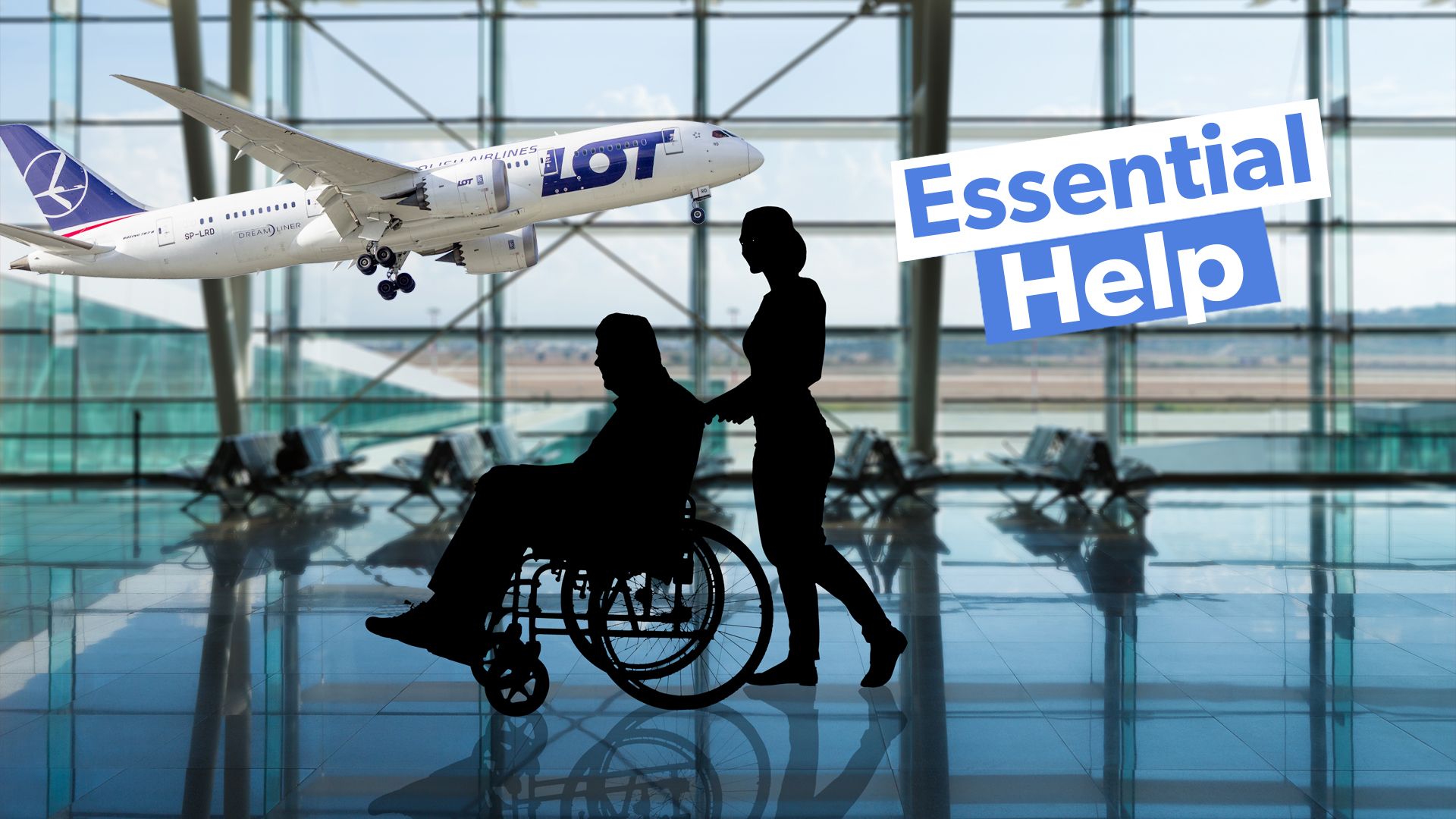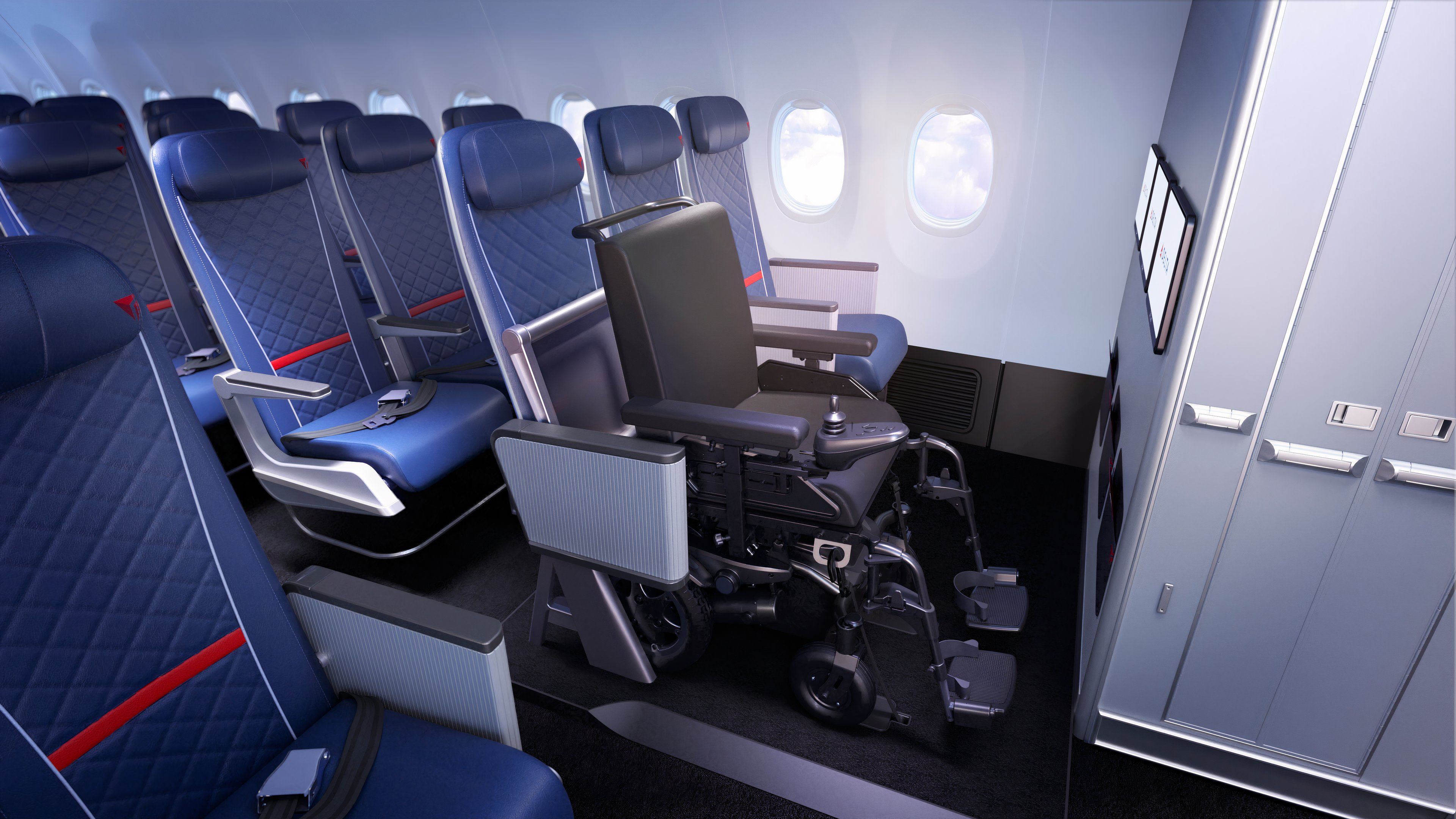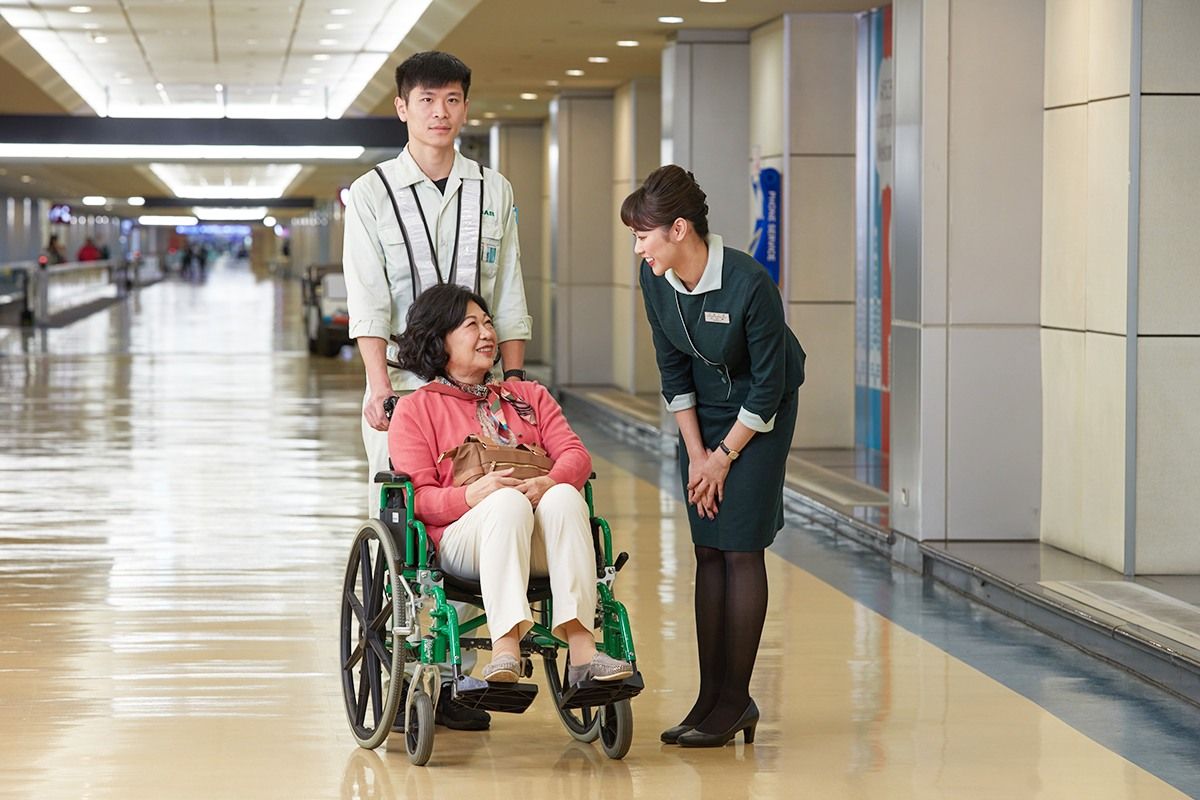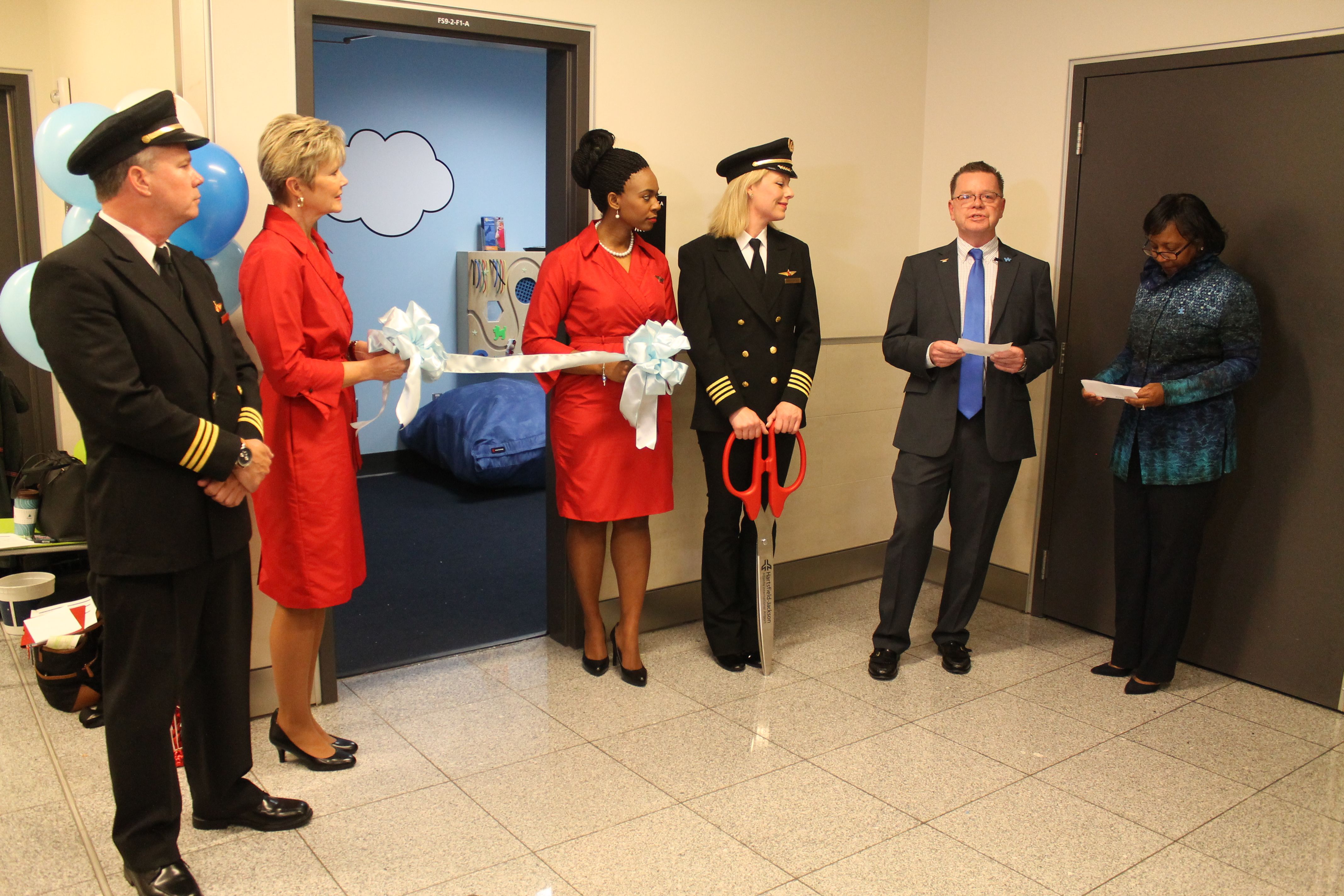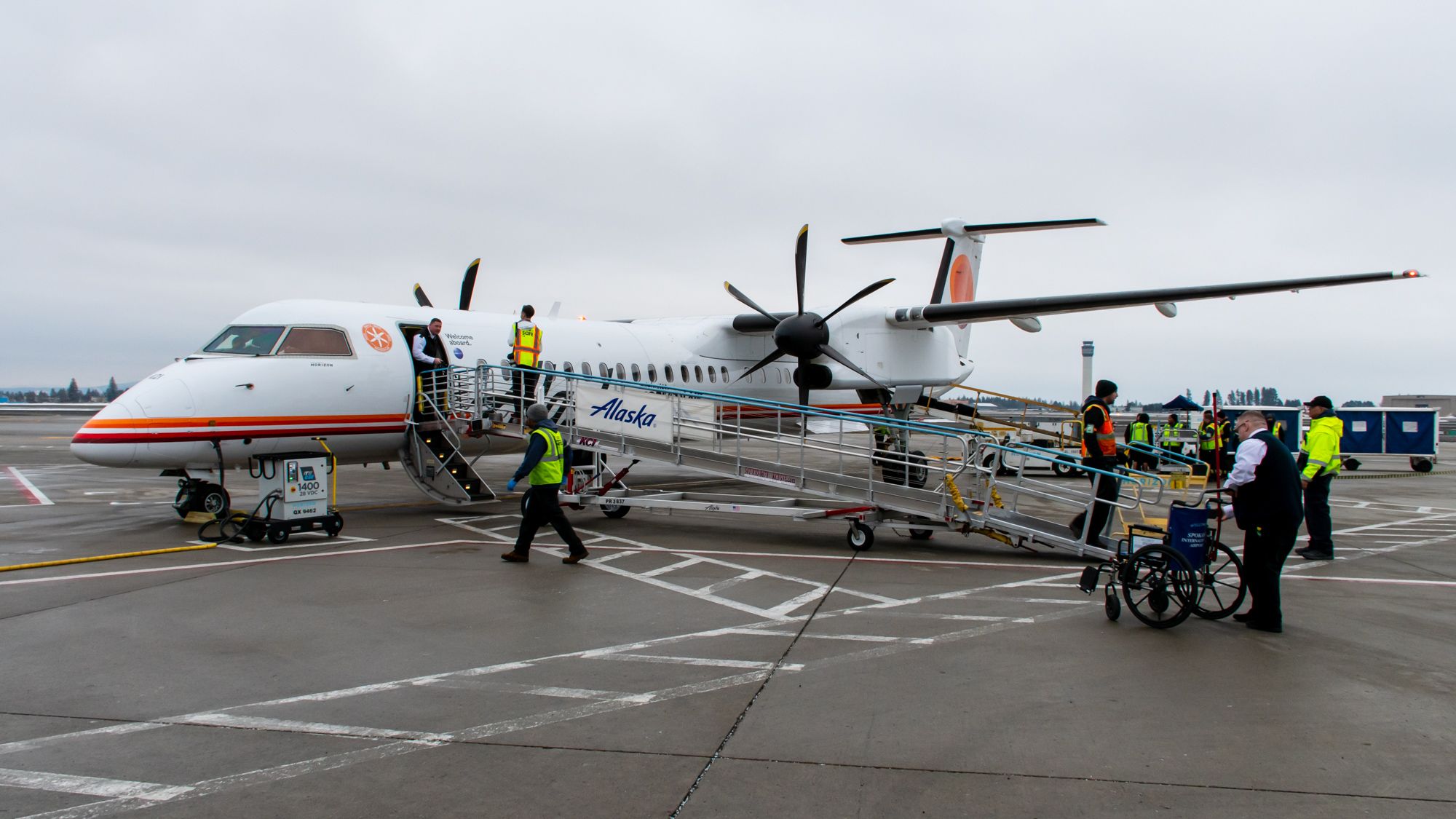Frank Gardner, a BBC security correspondent,
had to crawl on the floor of an aircraft to get to the lavatory
. The picture of this famed correspondent, who was partially paralyzed in the legs in an attack in 2004, shared a photograph of his struggles to get to a lavatory on a LOT Polish Airlines
‘ flight. According to Frank, the airline’s policy of not having wheelchairs onboard is “just discriminatory”.
Photo: PriestmanGoode
In early September, Melbourne Airport in Australia became the first airport in the nation to
provide a dedicated service to assist passengers who had trouble with mobility
. For this, the airport was equipped with Mobility Hubs at select locations.
These hubs are staffed by Travelers Aid personnel. In light of the aviation community adapting to the needs of travelers with accessibility requirements, one might wonder why aberrations such as those experienced by LOT Polish Airlines even take place.
What provisions do airlines and airports offer passengers with disabilities? And what changes might be needed to improve these provisions? Let’s find out.
The European aviation landscape for travelers with disabilities
According to the EU legislation, disabled people and people with lower mobility have the right to non-discrimination, free movement, and freedom of choice:
“Disabled persons and persons with reduced mobility, whether caused by disability, age or any other factor, should have opportunities for air travel comparable to those of other citizens. Assistance to meet their particular needs should be provided at the airport as well as on board aircraft, by employing the necessary staff and equipment. In the interests of social inclusion, the persons concerned should receive this assistance without additional charge.”
Photo: Eva Air
Despite such laws being imposed in the European Union
, one would wonder why LOT Polish Airlines didn’t have wheelchairs onboard. Though the Polish flag carrier has policies of attendants accompanying a traveler with restricted mobility from the moment they arrive at an airport to the moment they take a seat on a plane, and also “from the airplane to the baggage claim area after landing, in another wheelchair“, a traveler’s personal wheelchair would be placed in the aircraft’s baggage hold.
The LOT Polish Airlines’ flight was headed to London Heathrow Airport
(LHR). The Civil Aviation Authority
(CAA) of the United Kingdom
also has stipulated that “special assistance is stipulated in UK law” when:
- You fly on any airline from a UK airport.
- You fly on an EU or UK registered airline to a UK airport.
- You fly from outside the UK or EU to the EU on a UK carrier.
The CAA also notes that the passengers who would want special assistance would need to notify the airline they are traveling with about these requirements 48 hours before the flights. ![]() Lufthansa
Lufthansa
, the flag carrier of Germany, also says that if the carrier is notified at shorter notice, it can “no longer guarantee the best assistance and support“.
TAP Air Portugal
, for example, offers assistance to visually impaired passengers with check-in, boarding, and security checks. Virgin Atlantic
has also
partnered with Guide Dogs, UK
, to help visually impaired people navigate the airport better. There is a greater need for more European airports and airlines to adopt such innovative practices if we are to make air travel easier for people with disabilities.
A dive into the innovative approaches in the United States
The United States is the country with the highest number of airports. The US also has the highest number of air passengers. According to the Centers for Disease Control (CDC), up to one in four adults in the United States has some type of disability.
We will only learn about the difficulties faced by people with (hidden) disabilities if they resort to air travel and report about what services would make their travel easier.
Photo: Delta Air Lines.
Nonetheless, some airports based in the US have come up with ways to make air travel more friendly for people with disabilities. Let’s look at some of the innovative approaches airlines have used:
The United States also has the Air Carrier Access Act (ACAA), which instructs airlines to provide movable aisle, armrests, greater legroom, an adjoining seat or bulkhead seat, or other seat, if passengers with disabilities require these services.
A need for greater consistency in the provisions
While there are provisions that different airports and airlines have in regard to dealing with the problems faced by people with disabilities, these aren’t consistent throughout the world.
With air travel across nations becoming more common, IATA believes that different nations having different legislation regarding disability only “causes confusion for passengers with disabilities, difficulties for airlines, and potential safety issues“:
“in the EU the responsibility is on the airport operator to take care of PRMs right up to seeing them into their seat on the aircraft. In the United States, airlines are responsible for the special needs passenger from the moment that the passenger arrives at the check-in area…. The Canadian Transportation Agency (CTA) is tasked with ensuring the removal of undue obstacles for persons with disabilities in the Canadian transportation network. Some basic regulations were adopted in the mid-1990s, but usually the CTA decides any matters arising on a case-by-case basis.”
Carriers such as Air France
among others, provide information related to the services that passengers with special needs will get during their travel in Europe or the US. But people with disabilities don’t simply travel to or within the US or Europe. There are nations where aviation regulations regarding travelers with disabilities are virtually non-existent.
Photo: Joe Kunzler | Simple Flying
For now, the innovative approaches that airlines and airports are adopting to provide a smoother air travel experience for passengers should be available across more nations (and within airports within them).
Airlines, airports, and respective aviation authorities should also listen to the grievances of passengers, such as Frank Gardner, to see how the aviation standards could be more consistent and accommodate the needs of passengers with disabilities.

